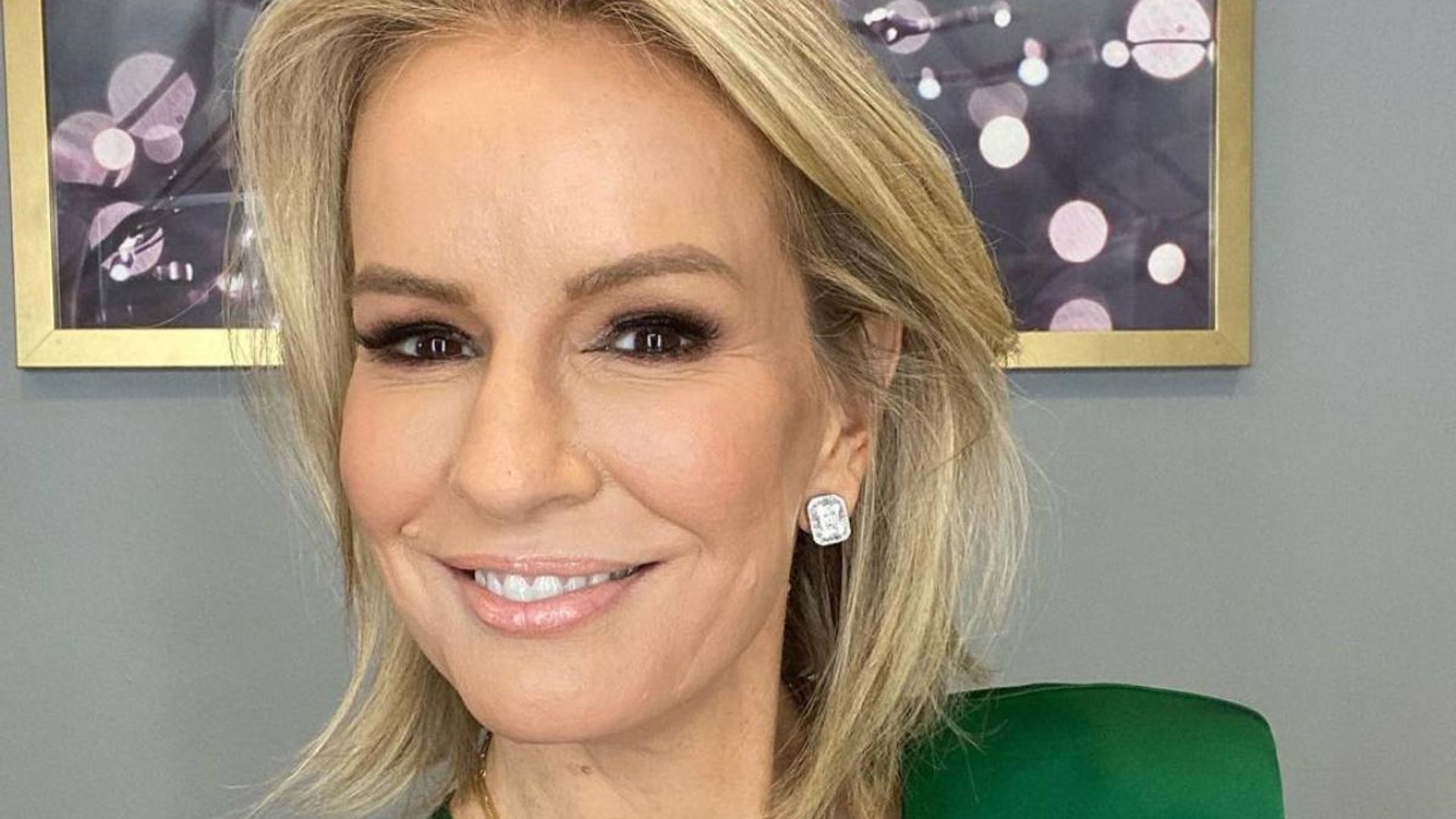
CEO Cohen Defends Navan’s Approach, Details TMC Strategy
Navan CEO Ariel Cohen discusses:
- The rationale behind the former TripActions’ name change
- The evolving role of AI in Navan’s offerings
- Navan’s ability to raise funds and the possibility of an IPO
TripActions last week rebranded to Navan, a palindrome that for the company represents a “more accessible” product that lives between the words “navigation” and “avant-garde,” according to co-founder and CEO Ariel Cohen. Cohen last week spoke with BTN editorial director Elizabeth West about what the new name signifies under the hood of technology, changes in the company’s go-to-market strategy, lingering criticism in the market around Navan’s effectiveness as a travel management company and, finally, its business model and plans for an initial public offering. Throughout, Cohen exuded his characteristic confidence and his own criticism of the TMC market. Edited excerpts follow.
BTN: TripActions had a lot of equity in its brand, but you’ve now streamlined the portfolio of products under the Navan name. Why was this the right time to change?
Ariel Cohen: It’s time for us to take the company to the next level. If you look at what we’ve created, [it’s] unique. It’s a travel and expense solution that on one side really is making a lot of effort to cater to company needs, whether it’s policy, the ability to control [spend] and save money, all of the things that the company really cares about, including safety. On the other side, it really focuses on the employees. How do you book your trip really, really fast? How you do you expense in no time? [We are now thinking] how can we now bring it to more and more and more people. Navan, in our heads, is a more accessible kind of name, it’s a palindrome. It’s navigating the world. It’s about the avant-garde.
BTN: What about the technology under the hood? Are you looking at a more integrated user experience?
Cohen: One hundred percent. Last week, we launched two things. One is a single super app. If you are a customer of all of our things, you’re going to see everything in one app. Let’s say that you really took everything from us—expense management, payment, personal trips, obviously business travel, you need to come to one app. And [as we progress our roadmap] you’ll see us going more to one experience.
I’ll give you one example. I go to London quite a lot—we have a pretty big team in London because we have Reed & Mackay there and we also have the Navan team there. I’m always doing the same thing: the same flight, the same car and always using the same coffee shop down the street from the Reed & Mackay office. We know all of these things; sometimes we know it from our booking capability; sometimes we know it from our expense capability. Can we actually create an entire experience for the traveler to even have the coffee place there, right, to have an entire itinerary [available] to really think about in a different way? You don’t see it in the app we released [last week], but we are going to release more and more features that will show you this experience. The starting point [was to] consolidate the product to one super app.
BTN: How does OpenAI figure into that picture? It sounds like it could play a big role?
Cohen: We’ve used AI, you know pretty much from the beginning. This is a lot of the secret sauce inside the app that allows you to get good search results. But that did a major jump with OpenAI. A year ago we released our chatbot, which we are now calling Ava. Ava is extremely effective in handling what I would call the main path of support needs. So you want to change your flight? You want to ask me a question when I’ll get a refund? You can even ask … what was the carbon emission on that kind of flight? Stuff like that. We measure Ava in the same way that we measure our [human] agents. Ava is getting the same satisfaction metric [as those agents] in 30 percent of the cases. The question is, can you take it farther to 50 percent or to 70 percent of the interactions?
I believe there are things that should be handled by agents. That’s why we acquired Reed & Mackay. You know the complex multicity [trip], or a trip that tends to get changed a lot. But I think it represents 10 percent of the need. The other 90 percent is stuff that was not automated because the infrastructure in travel is very complex. We’ve automated [a lot of] it: change tickets, getting unused tickets. The question was always, “how do I bring it to the user?” The chatbot is very effective at that, and now infusing it with OpenAI adds context.
Before we launched [as Navan], if you’d go to that bot and say, “book me the Westin New York,” the bot will not know what the Westin New York is. As of [our launch], you’ll do the same thing, and it will ask you what dates. That’s really the difference between the previous generation of AI and the new generation of AI. It’s an advancement in technology, and since we already had the infrastructure to use AI, it was an obvious step to take it to the next level.
If I think there is a business travel manager that kind of lives in the past and they don’t even want to consider a change, we will use a different sales technique, and we’ll go to other places in the organization.”
BTN: From the customer point of view, we hear excitement about the technology and the UX of the app, but some customers continue to comment on gaps in terms of travel expertise. They have noted to BTN it can impact account management and customer service—particularly when travelers don’t get the right human support. Can you address this and what Navan is doing to close any gaps?
Cohen: Once you take it from a software to the human element, now you’re dependent on every transaction. Somebody is … talking with an agent and what happened in this transaction. And once that happens, I’m not familiar with one service [provider]—not just in the travel industry—that when it goes to the human element, it is always consistent. And usually [it’s] when things are going wrong that [issues are] escalated, right?
We have 9,000 customers, and we are adding roughly 300 customers a month. I may not look at that single transaction, but for most of [our customers] … are they using us or not? Are they leaving or staying? The majority are staying here for years, right? The majority are fairly happy, and the majority are having really good discussions with us. … If there is a gap, we [will] identify the gap and like any other business, we’re working on solving the gap. We are very connected to our accounts, and we are always getting feedback, and there are tons of things that we should improve and continue to improve as we go.
BTN: Are most of these customers on the smaller side? If you look at the enterprise-level customer would the metrics tell a similar story?
Cohen: We recently took Unilever from American Express [Global Business Travel]. Unilever is an extremely complex program. We launched it in two months, so of course there is ongoing discussion. How do you tune [the program] and tune it and tune it? But if you talk with Unilever right now, they’ll say they’re very happy… and the program is getting tuned more and becoming better and better. This would be the journey of every customer.
You know, the industry has been very skeptical that we’d be able to service these enterprise accounts. Do we have churn? We have churn: one of the lowest [churn rates] in the industry. How do I know that everybody has these problems? Because we are taking customers from the others. If they were so happy with their Amex [GBT] expertise, to your point, or the BCD expertise and so on, they wouldn’t come to us. And it’s not just because of the technology. They are not happy with the service. They are not happy with the pricing model—this way of charging you on every transaction. They are not happy with the program they have been getting for years.
BTN: You bring up the commercial and business models here. With the Navan launch, you’ve changed your go-to-market strategy and basically opened the platform to unmanaged, individual users, as opposed to managed travel programs. What’s behind the change?
Cohen: There is this number that [the Global Business Travel Association] uses sometimes, that people spend $1.5 trillion or something like that on [business] travel every year. I’d suggest maybe it’s a third less than that, but even if you took a lower number … if you go in and aggregate all the TMCs out there—Amex GBT, BCD, Carlson Wagonlit and all the others—you’re getting to maximum $250 billion, right? So where’s the rest? The rest are companies that either still didn’t manage [travel] or their employees are booking outside the program. This is where the rest is.
Getting back to what Navan is all about, we think that we’ve created something that is really good for the employee. I want everybody to use the product. … I think there is an opportunity to show [Navan] to all these people that are not being managed or decided to go outside the program. If they use it individually, they get the service, the app, they get all these things. Eventually, they expense it. And eventually, a person can raise a hand while they are using the platform and say, “I’m the admin of this program now and I want … full visibility.” Up until now to do that you needed to interact with our sales team, which is a heavier process. We’ve seen a couple of companies [working in a similar way] that have been very effective attracting customers that are actually not managing [travel], and we want to do the same.
BTN: Do you see that working against companies that might already have established programs?
Cohen: It’s a little bit more complicated than what I’ve described. If you are already a customer of ours, you’re not going to get through that channel. Right now, specifically it is limited to [small and midsize businesses]. If you go to our product and try to do that, you’ll see that if you are a company above 101 employees, it will not let you in to [claim program admin rights]. But in the next few weeks, we’re going roll it out to everybody.
BTN: This looks like a way for you to influence travel management from the grassroots level. I’ve heard from some travel managers—and this isn’t unique to Navan—there can be a tendency to go around travel managers to drive change.
Cohen: If I think there is a business travel manager that kind of lives in the past and they don’t even want to consider a change—I’m not talking about doing a change, [but just] considering a change and seeing the pros and cons—yeah, we will use a different sales technique, and we’ll go to other places in the organization. In this case, the CFO … and the finance team [is a] good organization to talk with. Why? Because they are the first ones in the organization to suffer from a bad travel program. Because a bad travel program means low adoption. So people will book outside; [you get] no impact from policy and no visibility. Because [Navan] creates really good value for the CFO [and] real-time visibility globally over one type of spend and everybody is using the product, it’s something that makes the CFO really interested. If I’m a smart business travel manager—and again, you don’t have to agree with us—I will at least give it a very, very serious look.
We don’t have TMC margins, and the reason that we don’t is because 95 percent of our initial bookings is done online. Most of our support is done online. The economics are completely different.”
BTN: Navan, in its previous iteration as TripActions, attracted $304 million in Series G funding in October. BTN named you, again, among our Most Influential People in Business Travel for 2022. How do you continue to attract that money—especially in an industry known for its low margins?
Cohen: The names we are raising money from are the smartest technology investors on the planet. We are not raising money … from some random people. And we’ve raised money, especially the last round, in times that all of tech is getting scrutinized. [We’re up against] really, really, really tough metrics by the same investors … [and] they are looking at the metrics, and the metrics are good. We don’t have TMC margins, and the reason that we don’t have the TMC [margins]—and we’ll eventually be public and publish all of these things—is because 95 percent of our initial bookings is done online. Second, most of our support is done online—so when you want to change your trip, it’s not just the 30 percent I mentioned earlier. You can click buttons and change stuff [yourself]. So the economics are completely different.
I will not say the names because I’m under NDAs—but during Covid, we had the opportunity to look at a lot of TMCs, probably most of them, and the economics there are bad. So that’s one side of the economics. The other side is growth. Amex GBT is public—and they went public via [special purchase acquisition company], which is strange, but you can see their growth is based on acquisitions. I’m very familiar with the Amex GBT reporting. … The type [of investor] Navan is attracting will not finance a company that is not growing. We are growing really fast.
So it’s a good business. It’s a good business in the way that we’ve built it, right? And I think it’s a good business in the way that Reed & Mackay built it, right? That’s why we acquired them. [TMCs] are a good business in these two extremes. But, in a lot of cases, it’s actually not a good business. … We went very intimate with the Carlson numbers and yeah, it’s a different business model. The numbers are not good. So when people are questioning, OK, how come [Navan] has a different valuation? It’s because we have a different business. It’s just a completely different business.
BTN: Since you reference it—Navan is going public? There’s plenty of speculation that you filed confidential paperwork.
Cohen: I will not talk about the filing because it’s all internal process. I will say that the company is ready from a maturity perspective, business perspective [and a] numbers perspective to go public. But the market right now is not supporting it. Because we do have enough cash, we don’t have the urgency to do it. Right now … it’s actually less about valuation. It’s more about stability. Our employees are getting shares in the company, so it’s a little bit different. If you have shares, you [can be] distracted by, “it went up, it went down.” I want to see the market more stable for us to go public, but there is no question. If you look at the amounts that we are raising, if you look at our profile, if you look at where the company is at, we’ll eventually be public.






